We Rarely Lose Technology
There are few forgotten inventions, and none that we might truly care about 🍈

A common trope in the land of fantasy fiction and games is that of lost technology. The hero stumbles upon some ancient ruins, and then finds an ancient weapon, or an ancient vehicle, or an ancient intelligent robot, that helps him in his quest. Nobody alive could possibly make a new instance of that weapon/vehicle/robot: it was built at a time when technology was far more advanced, a golden age of wisdom and science. In the current age, a dark age, an age of decay, much has been lost; much has been forgotten.
This trope is very fun and makes for cool stories. But how much does it match reality? How often do we actually forget the secrets of past technology?
As it turns out, not very often at all. And when we do, it’s kind of deliberate.
Below, we’ll go over almost every case that is commonly cited as an instance of lost technology, categorized by the way it was (or is purported to have been) lost. But first, we need a working definition of the concept.
It seems obvious that lost implies an inability to make something that past people could. This inability could be because some other prerequisite technology is unavailable: if we forgot how to achieve nuclear fission, then nuclear power plants and nuclear weapons would become lost technologies. Perhaps our descendants would discover an ancient nuclear silo and marvel at the ingenuity of their ancestors while being unable to ever replicate it.

But that just kicks the can further down the road: the real lost technology in this example is nuclear fission. What would it mean for nuclear fission to be lost?
It means something like the disappearance of all knowledge about it, especially the methods and processes. Knowledge exists in several forms: books, computer files, human brains. If no books and files explaining fission remained, and if all people who knew how to perform fission were dead or had otherwise forgotten the details, then we would have lost nuclear fission.
This seems unlikely to happen, even for something as technical as nuclear physics, since there are tons of labs, companies, and governments, as well as countless publications online and in libraries, that presumably hold knowledge of fission. But imagine this was the 1930s, and fission was a new phenomenon that only a handful of physicists knew about: if they all died in some tragic incident, then we might actually lose the technology. (Of course, it could still be rediscovered later.)
Thus we get the first way that technology can be forgotten:
The Unfortunate Lone Inventor Who Carries His Secrets to the Grave
The canonical example here is this fellow, named Girolamo Segato:
Girolamo Segato was an Italian Egyptologist at the dawn of modern Egyptology, in the early 19th century. He participated in several archeological trips to Egypt, where he became an expert on mummification techniques. (Unfortunately his studies on mummies are lost.) Upon returning to Italy in 1823, he began to invent a new technique, inspired by mummification, called mineralization or petrification: he was able to preserve cadavers and body parts by mineralizing them, keeping their textures and shapes intact and even their elasticity.
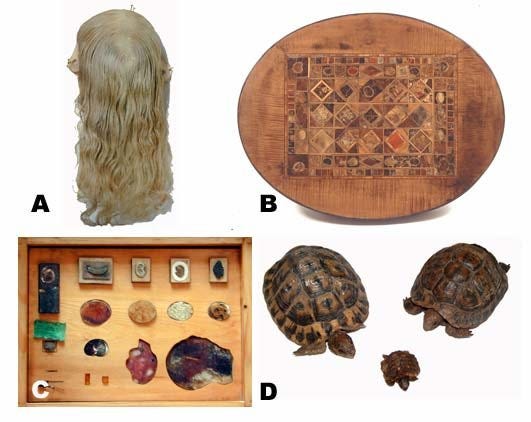
Segato became famous, but not in a wholesome way. He was soon accused of performing Egyptian black magic. Or of experimenting on subjects that were still alive — which might explain why his petrifications were so life-like! He died in his forties, soon after having destroyed all of his notes. On his tombstone one can read, “Here lies Girolamo Segato from Belluno, who would have been whole and petrified if his art had not perished with him.” To this day, we don’t know how he performed his petrifications.
There are several other cases of eccentric inventors who died before they could commercialize their genius invention. Starlite is a heat-resistant material that was developed in the 1970s and 1980s by a British hairdresser amateur chemist, Maurice Ward. You can view it shielding an egg from a blowtorch on YouTube. Certain that Starlite was worth billions, Ward didn’t want to sell Starlite directly to anyone, which hampered the commercialization process, and when he died in 2011, it was said that he took the exact formulation to the grave.1
Then there’s Troy Hurtubise, a Canadian inventor who came up with:
Firepaste, a heat-resistant material similar to Starlite;
Angel Light, a device that “makes walls, hands, stealth shielding, and other objects transparent”;
The Ursus Suit, a suit meant to protect from grizzly bears;
The Trojan Ballistics Suit of Armor, an exoskeleton intended to protect Canadian soldiers in Iraq and Afghanistan.

To the extent that any of these are real (the Firepaste might be, the Angel Light almost certainly isn’t, and the suits are probably real but it’s unclear how much they protect from grizzly bears and Taliban fighters respectively), Hurtubise can’t tell us how they’re made, because he died in a car accident in 2018.
Also in “probably impossible but we’ll never know because the inventor died suddenly,” the Sloot Digital Coding System by Dutch electronic engineer Romke Jan Bernhard Sloot, who left this world in 1999 due to a heart attack “just days before the conclusion of a contract to sell his invention.” The technique is supposed to allow the encoding of information with several orders of magnitude more efficiency than we can do now. For example, it can encode a full movie in 8 kB instead of the usual ~3 GB per hour of playing time. This is impossible according to Shannon’s theorems on data compression — but we’ll never know!
All these examples are fun — but are they really good examples of “lost technology”? They don’t go that much further than being cool ideas in the head of a single guy. There are certainly tons of lost ideas that vanished when their holders died, so this is nothing too special. Besides, half of the ideas here probably didn’t actually work, and the other half are cool but not that directly applicable.
Still, they highlight that technology can be lost when it is at its most vulnerable. Someone once told me that she knew a professor of engineering and his grad student who didn’t ever take the same flight, because they were the only two people in the world who knew the details of a discovery they had made, and it would be a great loss if they died in the same plane crash. That doesn’t strike me as a particularly reasonable precaution, but maybe that makes sense when a precious new idea is in its infancy.
The other way to make an idea vulnerable, of course, is to make it secret. And so we come to our second method of losing tech:
Classified Military Secrets That Are TOO Classified
Incendiary weapons have been used forever. But around the year 672, a Jewish-Greek architect named Callinicus, from what is now Lebanon, and what was then the Byzantine Empire, upped the game by inventing a new kind of substance. It could burn on water. It could melt metal. It could be put into grenades and siphon-based flamethrowers. When mounted on ships, this so-called “Greek Fire” would prove to be a formidable weapon, and the Byzantine Empire used it to great effect in its wars against the Arabs and Bulgars.
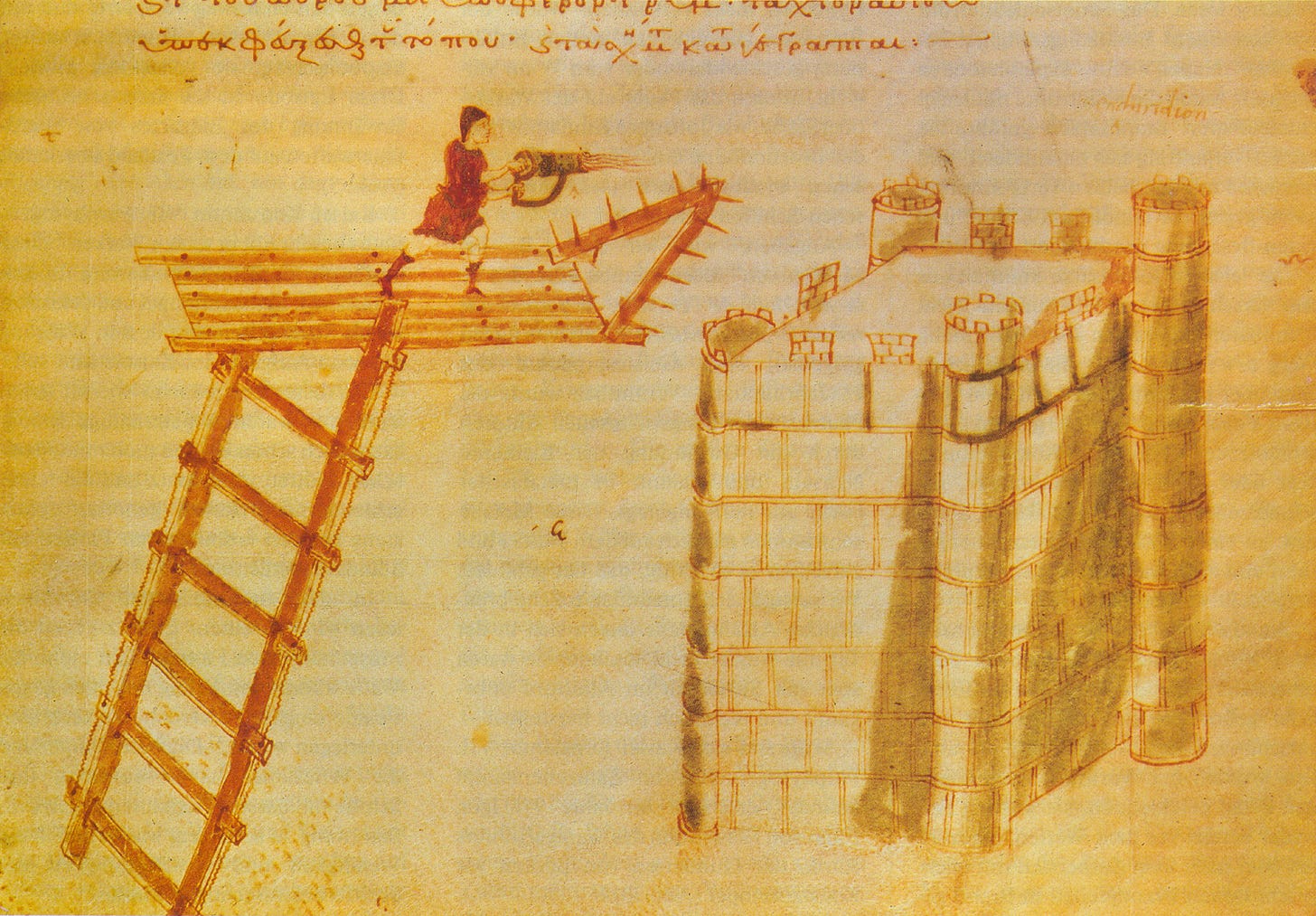
Greek Fire was a closely guarded state secret, for obvious reasons. And also non-obvious reasons: at some point the Byzantines started writing that Greek Fire had been “shown and revealed by an angel to the great and holy first Christian emperor Constantine” and that an official who had been bribed into giving some to the enemy was struck down by a flame from heaven as he entered a church. The Arabs and the Bulgars, of course, did everything they could to copy the weapon. They captured some fireships at various points. Yet they never managed to replicate it.
Neither did anyone else. As of the early 1200s, mentions of Greek Fire disappear from accounts of battles, for unknown reasons. It’s possible that the secret had been forgotten by the Byzantines themselves during the general decline of their state. Both the manufacture and the operation of Greek Fire was highly compartmentalized to ensure nobody could know the whole system, and it’s not a stretch to think that such a complex logistical effort couldn’t be maintained as the empire shrunk.
Today there are several theories on the composition of Greek Fire, and we think it was some combination of “pine resin, naphtha, quicklime, calcium phosphide, sulfur, or niter.” It seems likely that we’ll never know the exact composition: a true lost invention.
Closer to us, and going back to nuclear technology, Fogbank is the code name for a nuclear material used in some 1970s and 1980s nuclear warheads of the American arsenal. Fogbank is probably some kind of aerogel, but it is extremely classified. “The material is classified. Its composition is classified. Its use in the weapon is classified, and the process itself is classified,” a general is quoted as saying in this article. The problem started when the US government decided to refurbish its warheads in 1996. Nearly all of the staff that had been involved with Fogbank had retired or left, and very few records of the manufacturing process remained. So for some time it was lost, and they had to reverse engineer it. It is unclear whether they succeeded, and whether Fogbank is used in the refurbished warheads: everything is still classified.
Another potential entry in this list is the Panjagan, an archery weapon or technique used by the Sasanian Persian Empire in the 500s and 600s. Islamic authors write that it allowed Persians archers to fire five arrows at a time. It might have been some sort of specialized crossbow.
Okay, so technology can be lost when it’s a secret being jealously guarded by an eccentric inventor or a by paranoid military force. What about when it’s simply that the maker is extremely skillful?
Extraordinary Levels of Skill (Not Actually Lost Technology)
The Glass Flowers and Glass Sea Creatures of the German glass artists Leopold Blaschka and his son Rudolf are extremely impressive. So much so that people sometimes claim that the Blashckas used secret techniques that are now lost. But they most likely didn’t: they were just extremely good at making hyperrealistic models out of glass.
Antoni Stradivari made great instruments — Stradivarius violins today sell for millions of dollars. People have, of course, tried to replicate his craft, but his instruments are still the top of the game. So much so that Stradivari is sometimes claimed to have used techniques that are lost to time. But he most likely didn’t: he was just really good at making violins.
(Or not: there have been many tests since the 19th century and the sound quality of Stradivarius violins is indistinguishable from other high-quality instruments.)
The Ancient Egyptians cut stone with an impressive level of precision. The Incas in South America did too. So much so that people sometimes claim that the Egyptians and the Incas used some kind of now-lost technology. But they most likely didn’t: they were just really good at cutting stone.
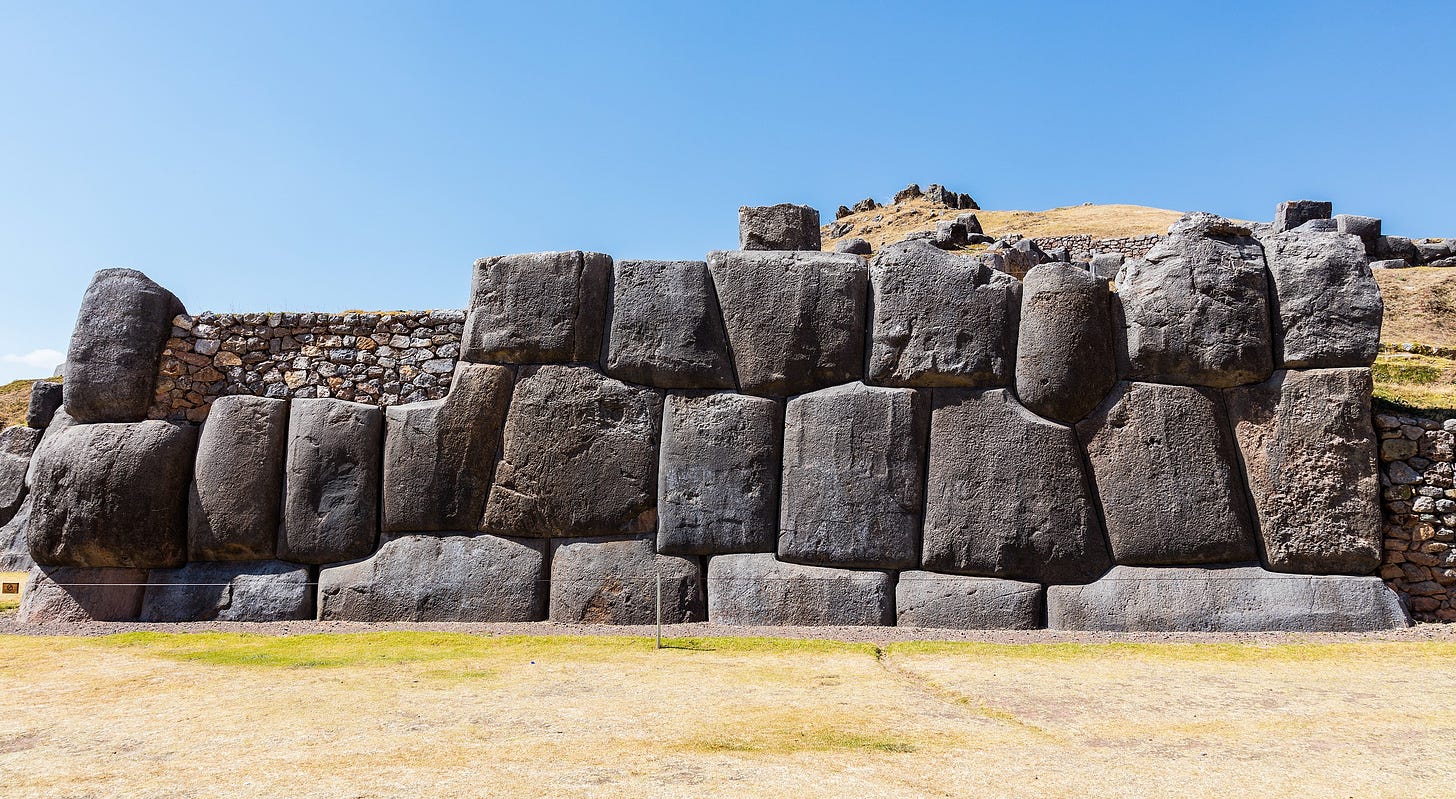
The Anatomical Machines of 18th-century Naples are models of the circulatory system with an impressive level of accuracy. So much so that … Okay, you get the idea. Claims of “lost technology” are easy to make whenever anyone in the past made something impressive. It might be true that no one alive today would have the skills necessary to make glass flowers of the same quality as the Blaschkas’, but it’s a stretch to say that this particular knowledge of the Blaschka’s is “technology.” If someone truly cared, they could presumably get as good as the Blaschkas at glassmaking, or as good as the Incas at stonecutting. (Maybe not as good as Stradivari at violin-making, but that’s probably because Stradivarius is just a brand at this point.)
A related category is that of:
Mysterious Artifacts
Such as the Antikythera mechanism, an analog computer from 2nd century BC Greece that was probably used to computer astronomical positions, but which remains puzzling.

Or the Baghdad Battery, found near Baghdad but actually more ancient than that city, dating from the Parthian or Sasanian Persian Empire: a ceramic pot, a tube of copper, and rod of iron that have been hypothesized to be used for electroplating or some other electrical phenomenon. It could also just be some kind of sacred vessel to hold scrolls.
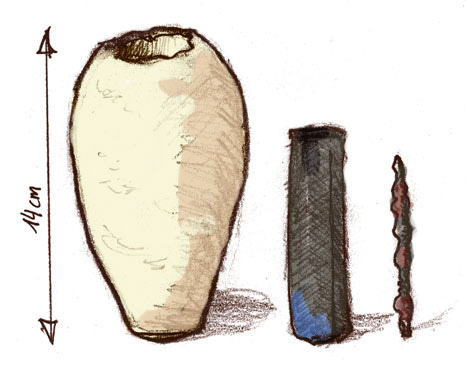
There are more, but again, I don’t think any of them qualify as “lost technology.” It is true that some kind of knowledge has been lost — specifically the knowledge of what these things were used for. But it seems likely that if we knew that, then we’d be able to replicate them easily. In fact many replicas of the Antikythera mechanism have been built, based on hypotheses on its functioning, including this one in Lego:
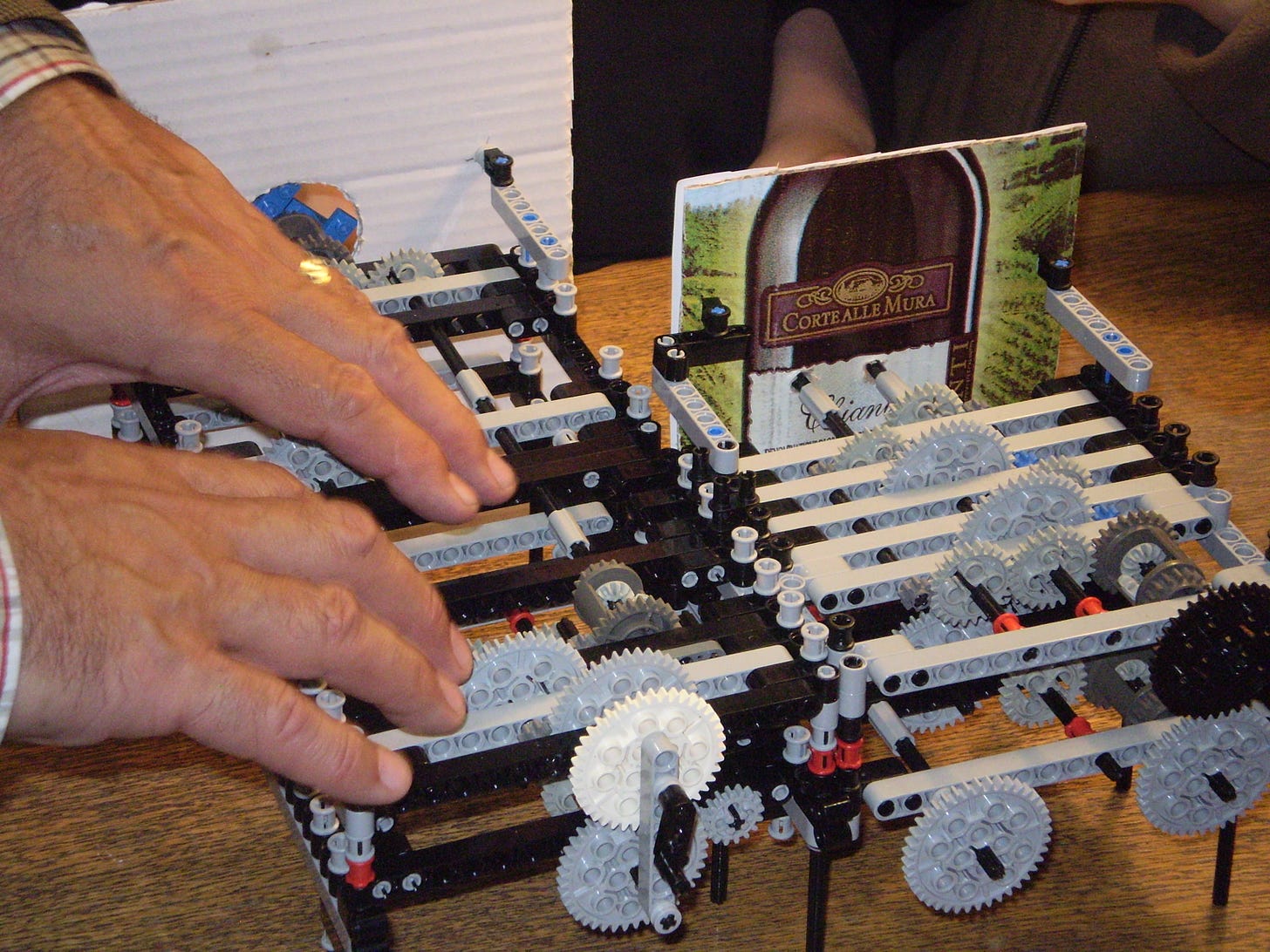
Unusual Materials Whose Properties Depend on Some Specific Process Whose Details We Forgot
Roman concrete is pretty incredible.2 It is what the dome of the Pantheon is made of:

Why is the Pantheon still standing after nearly 2000 years, while most of our concrete infrastructure crumbles after a few decades? Is it because we have lost the secrets of ancient Roman technology?
Not really. We know how to make durable concrete; it’s just more expensive than the alternatives that last 30-40 years. Besides, we have figured out why Roman concrete was so great. In many cases it is because of the addition of pozzolana, a material that comes from volcanic ash and was common in the region of Naples, near the Vesuvius volcano. Pozzolana can help concrete auto-repair its cracks, which is pretty cool, but not supernatural either. We sometimes use pozzolana in cement today, and there’s extensive research that goes into concrete chemistry, considering concrete’s huge economic importance.
It seems plausible that Roman concrete was, in a sense, lost as the empire crumbled and collapsed. It might have been difficult to procure pozzolana ash when the trade routes were less safe in the early Middle Ages, which would make durable concrete rarer. But then again there’s plenty of use of mortar in the medieval period, notably in cathedrals, so it’s not like the knowledge of making “liquid stone” became unheard of.
Possibly similar cases occur with metals. The iron pillar of Delhi, in India, may not look like much …
… but it was erected in the 5th century, under the reign of Chandragupta II, and it still hasn’t rusted, which is rather extraordinary. Scientific analyses have found that it is coated with a thin protective layer of iron hydrogen phosphate hydrate (FePO4-H3PO4-4H2O). We don’t really know how the ancient Indian metallurgists did it, which means it could be an actual lost technology. Or maybe they just got lucky.
Another technology attesting to the skill of Indian metallurgists is wootz steel, a steel alloy with high carbon content that creates cool patterns on its surface:

Wootz steel is the material behind Damascus steel, famous throughout the world for making great swords. (The swords were made in Damascus from steel imported from India or Iran.) The production of Damascus steel declined until it completely stopped around 1903, which means that this photo from 1900 shows one of the last sword-making guys:
Wikipedia says that:
Several modern theories have ventured to explain this decline, including the breakdown of trade routes to supply the needed metals, the lack of trace impurities in the metals, the possible loss of knowledge on the crafting techniques through secrecy and lack of transmission, suppression of the industry in India by the British Raj, or a combination of all the above.
I think this qualifies as lost technology, or at least it did for a time: quite a lot of effort went into reverse-engineering the famous steel, and today we are perfectly capable of crafting metal objects with the carbon nanotubes that are necessary for the cool wavy pattern and sharpness.
The part where the British Raj possibly suppressed the wootz steel industry brings to mind muslin, a light cotton fabric that made the wealth of Bengal, in the Indian subcontinent, until the East India Company took over. I wrote about it in my big post about Bengali proto-industrialization, when I learned that the stories about the British cutting the hands of cotton weavers were most likely fake, but the economic policies of the empire and the 1769-1770 Bengali famine did devastate the weaving industry and contributed to the loss of the elaborate 16-step process used to make the fabric.
Muslin still exists, but potentially not the kind of the highest quality made in 18th- and 19th-century Bengal, although there are now attempts to revive it.
But the most striking example of an ancient object where ancient makers must have developed an advanced process brings us back to Rome. Behold the Lycurgus cup, a 4th-century artifact that looks green when lit from the front:

… but red when lit from behind.

Glass that changes color depending on whether light is reflected or goes through it is called dichroic glass. Modern chemistry is perfectly able to make dichroic glass,3 but the Lycurgus cup was probably a happy accident by Roman glassmakers: there is no way that they could finely control the concentration of silver and gold particles needed to give the glass the dichroic property. The cup is also almost unique among Roman artifacts, and dichroic glass reappears in the historical record only in Renaissance Venice, so this was also a lost technique for a long time.
All of these qualify as lost technology in the sense that the knowledge of the exact process was lost. On the other hand, we know how to make self-healing concrete, rust-resistant metal, carbon-nanotube-reinforced steel, light cotton fabric, and dichroic glass. So how lost are they, really?
Extinction of Living Things
Sometimes people cite silphium as a lost technology. Silphium was a plant that grew in Libya and was extensively used during antiquity as a condiment, perfume, and contraceptive, to the point that it went extinct. Here it is on a coin:
But this is clearly silly, right? Silphium is not a technology; it’s a plant. A living thing. It is no more a lost technology than the dodo bird or mammoth or T-rex are.
To be sure, the extinction of a living species is a tragic loss of knowledge. That knowledge is recorded in DNA, and we are nowhere near the level of control over biology necessary to replicate lost genetic information. But natural species are not technology.
Blurring the line, however, are crops that were artificially selected. I am thinking of the Montreal melon, once grown in my city in places that are now fully urban neighborhoods. Slices were sold to wealthy New Yorkers for the same price as a steak.
The Montreal melon is not extinct: some seeds were rediscovered in the 1990s, and some farmers have grown it, and you can buy seeds yourself — but it is a temperamental species, not commercially very viable anymore. It could easily have been lost.
Such is the fate of countless varieties and cultivars of domesticated plants and animals. The ones we see in grocery stores are but a tiny fraction of all those that farmers have developed. Agrobiodiversity is estimated to be threatened at 100 to 1000 times the rate of natural biodiversity.
I wouldn’t call the extinct cultivars “lost technology” — but they’re close enough.
Hoaxes and Exaggerated Claims
Like I said at the beginning of the post, lost inventions are a fun trope. So it should come as no surprise that many of the stories about them are simply that: stories.
There is a story of a Roman inventor who presented emperor Tiberius with a bowl of flexible glass; after the man said only he knew the manufacturing process, Tiberius had him put to death, fearing that flexible glass might devalue gold and silver. (This is of course dumb, unless Tiberius was economically illiterate: devaluing gold and silver was in his interest if he was the only one to have flexible glass!)
There are many stories around mithridate, the all-purpose antidote consumed by king Mithridates VI of Pontus. Although the elaborate mix of pharmaceuticals may well have existed, it almost certainly didn’t actually have all the properties ascribed to it.
There is a story about the heat ray of Archimedes, supposedly used to burn Roman ships using mirrors or lenses to focus sunlight; this is almost certainly not possible, as many people have argued, from René Descartes in the 1600s to MythBusters in 2004.
In the same spirit, there is the story of the teleforce, Nikola Tesla’s theoretical weapon that was never built before he died; there is no particular reason to think it would have ever worked.
There is the story of Zhang Heng’s seismoscope, build in the year 132: surely a real device, but replicas have been made, and it seems highly likely that the machine could not actually detect earthquake with the accuracy and precision claimed in historical accounts.
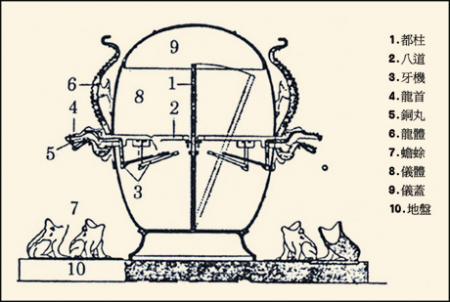
And like we saw, there is the story of Stradivarius, and the story of the Sloot coding system, and the story of the Troy Hurtubise’s Angel Light, and so on and so forth.
So, how real is lost technology?
Certainly, loss of knowledge occurs all the time. People die, and their ideas and life stories vanish forever. Books are destroyed to the last copy; computer files get permanently deleted; stone inscriptions wear down from erosion. Cultures and languages go extinct. Species, too, with the knowledge embedded by evolution into their genes.
Some of this knowledge is technological — but only a small fraction of it. Technology is rarely lost, because it is often important and therefore documented, or it exists in some physical form and can be reverse-engineered even if the original knowledge is lost. When there’s a material or device with useful properties that we know the Byzantines or ancient Indians had, then it’s a pretty good motivation to emulate it. And usually, we succeed. At worst, the emulation will be imperfect because we don’t have the exact same proportions as the original recipe, or because we found some superior ingredient.
When technology is truly lost, as in a minority of the cases above, it is usually because we don’t care.
A lone inventor might have a truly revolutionary idea, but it’s far more likely to turn out to be impossible or have no commercial potential (which is another way of saying that nobody cares). An ancient manufacturing process might be truly lost, but it’s almost certainly not a big deal because we can manufacture something similar with far less hassle anyway. A military device might be so safely guarded by a country that it is eventually forgotten, but it doesn’t matter much if that weapon would be obsolete anyway compared to modern armaments.

Of course, everything I’ve said is true of a specific human culture: the global, cosmopolitan civilization that currently spans the Earth and invents new things all the time. Technology can be lost when a small culture finds itself isolated. The aboriginal Tasmanians, when they were separated from their cousins on the Australian mainland, forgot how to manufacture boomerangs and spears and perhaps even fire. The people living in European backwaters after the collapse of the Roman empire may have forgotten how to make good cement or dichroic glass.
In a way, though, that’s still the same phenomenon: the people in those situations lost boomerangs and Roman concrete because they didn’t care anymore. They had more pressing concerns.
So: loss of technology is not impossible. But to an innovative and large culture like modern human civilization, it’s not really something that happens. It’s just a fun trope for stories. Let’s hope it remains that way.
It’s unclear what actually happened to Starlite. Wikipedia tells contradictory stories: that the secret was lost upon Ward’s death, that some of his family members knew, and also that a company called Thermashield bought the rights and replicated it.
See also this fun post by Jason Crawford about the history of cement.










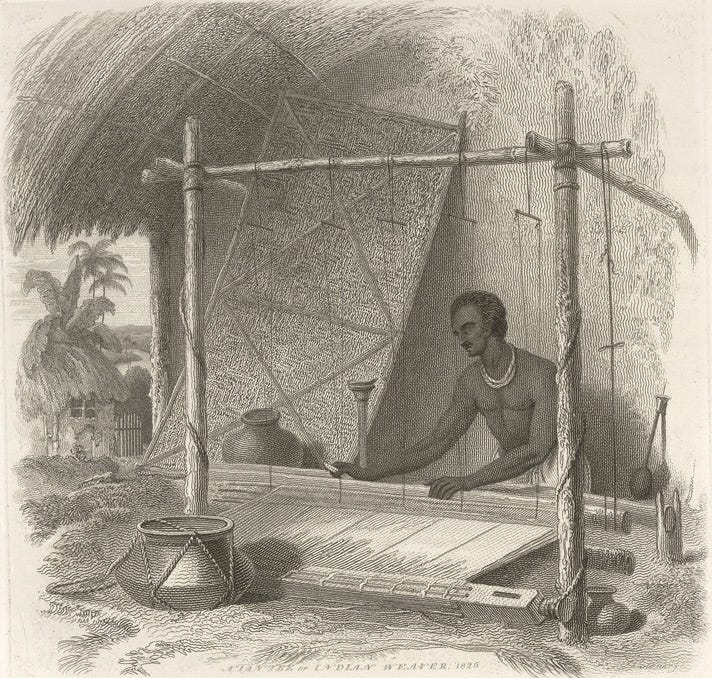


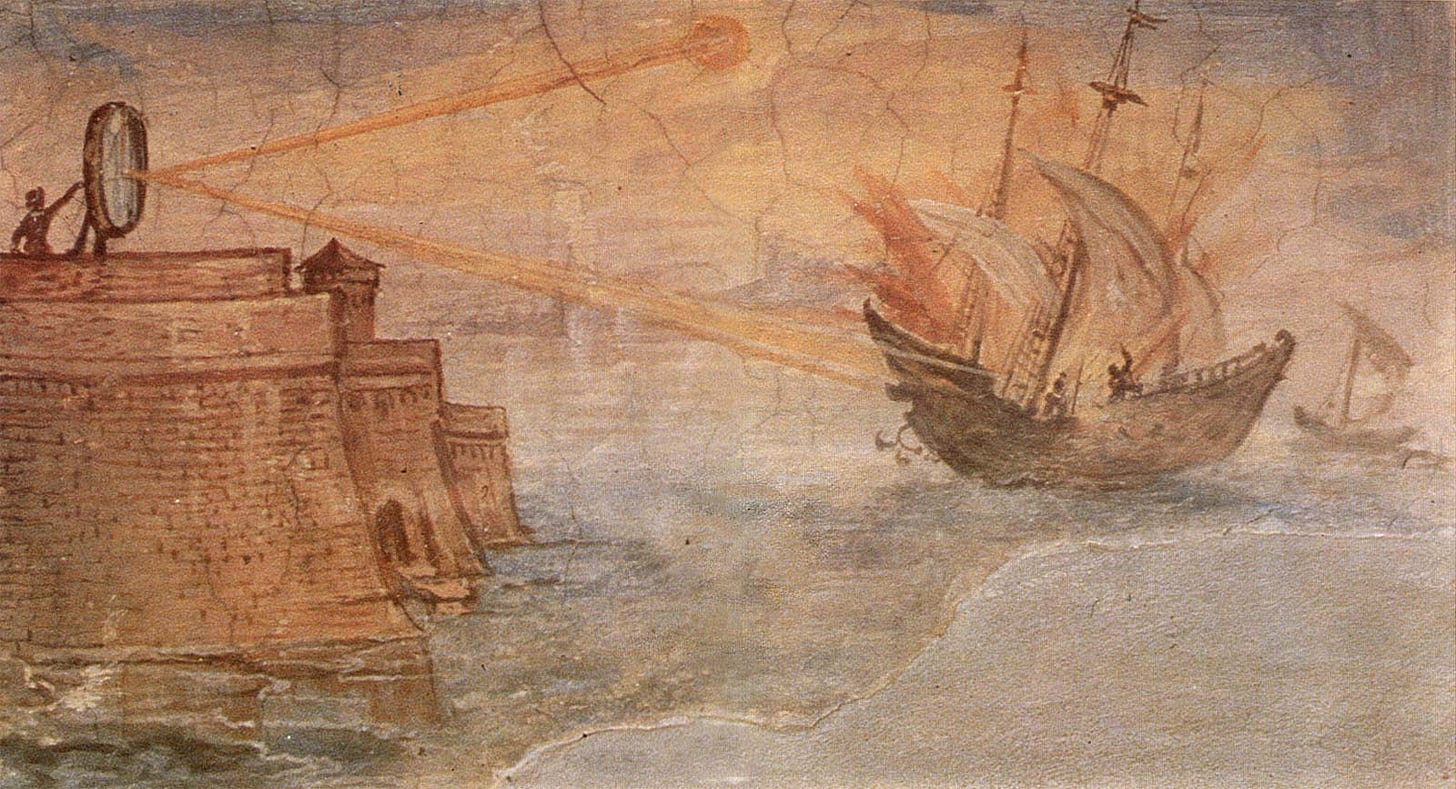

"So much so that people sometimes claim that the Egyptians and the Incas used some kind of now-lost technology. But they most likely didn’t: they were just really good at cutting stone." This and the other examples "just really good" doesn't make sense. It's basically handwaving and begging the question.
Good in such craftmanship means they had developed techniques (doesn't have to involve new tools or technology in the sense of an invention: specific moves, or specific way or applying existing tools still quality) that a modern expert on those areas doesn't know how to replicate.
"We don’t really know how the ancient Indian metallurgists did it, which means it could be an actual lost technology. Or maybe they just got lucky."
Again, hardly probable. It's obviously this wasn't their first rodeo, or rather first steel coated using this technique. If they got lucky at some earlier point making steel columns and landed at the technique, it still qualifies as a lost technology, since they knew the technique and we don't. Many of our mordern technologies are also discovered by accident, doesn't mean they're not technologies but "luck".